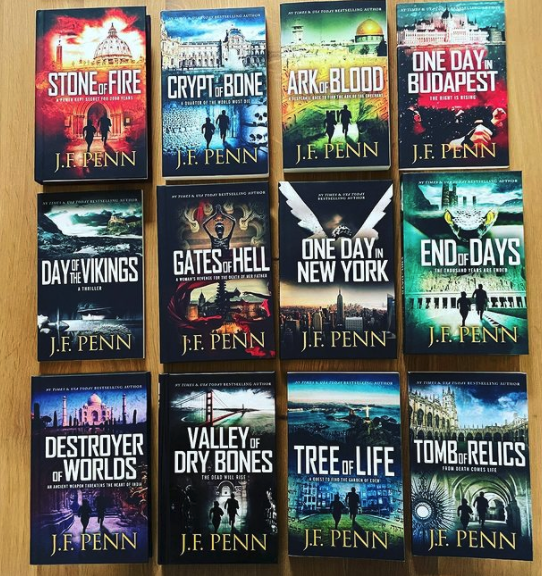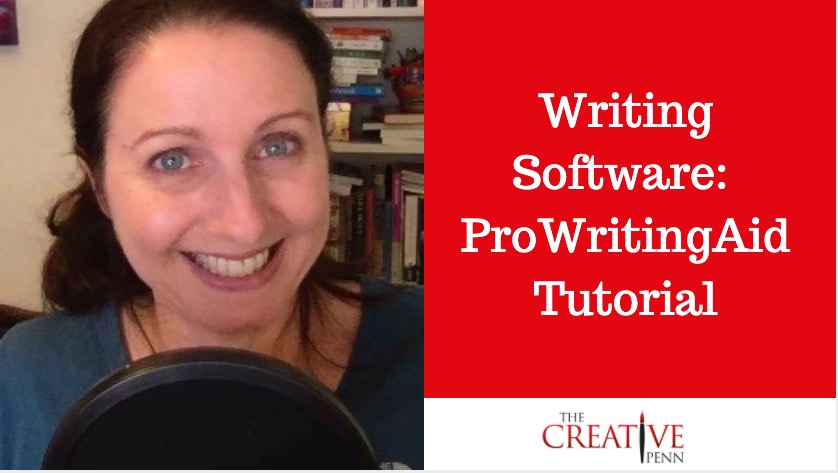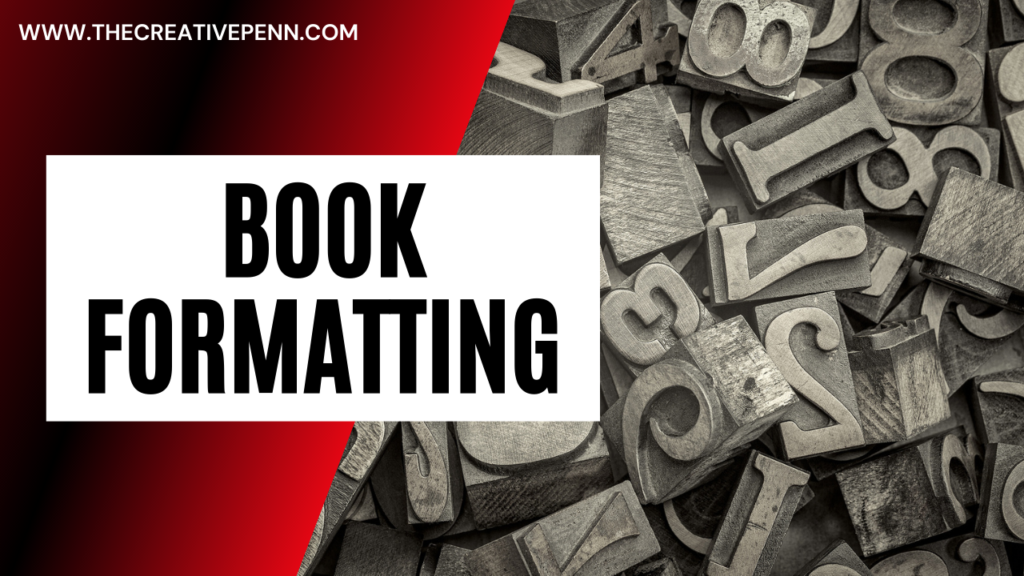In January 2022, I re-edited my first novel, Stone of Fire, which I started during NaNoWriMo in 2009 and published in April 2011. In this episode, I explain why and how I re-edited the book, as well as some lessons learned from revisiting my writer self of over a decade ago.
This episode includes:
- Why I decided to rewrite when so much advice says ‘never go back’
- How Stone of Fire developed from 2011 to 2022
- My re-writing process
- Practicalities of publishing a new edition
- Craft notes from rewriting, including character, pacing, grammar and sentence structure, author voice, dialogue, and more
- Was it worth it?!
Why I decided to rewrite when so much advice says ‘never go back’
There’s nothing really wrong with the book. As I write this, Stone of Fire has 1374 reviews on Amazon US with a 4.1 star average (and many more reviews on other stores and platforms) so clearly, readers enjoy it.
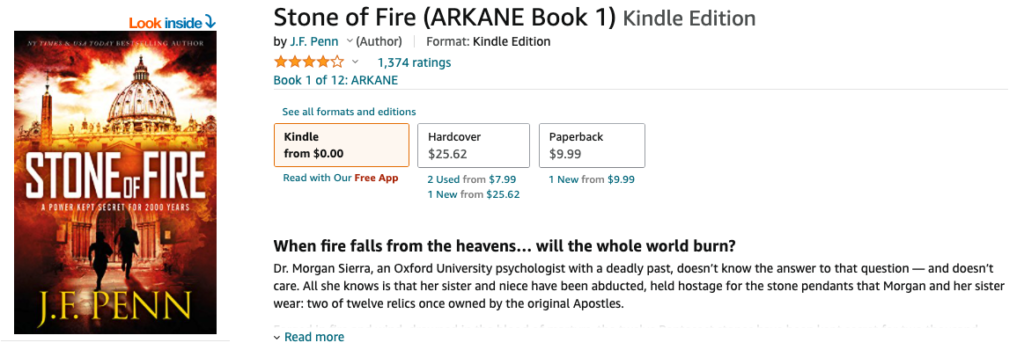
But I know I can improve it.
Stone of Fire was my first novel — but it’s also the first in my 12-book ARKANE action-adventure thriller series. It’s my permafree first in series ebook, the one I repeatedly put ads on to bring readers into my writing. It’s pretty important for my fiction marketing efforts!
Morgan Sierra, the main character of my ARKANE series, is also my alter-ego. Sure, she’s an ex-Israeli military psychologist, Oxford University professor, and Krav Maga expert — but her thoughts are often my own, or at least represent some facet of my personality.
Like me, Morgan is fascinated with religion and travels the world, but of course, I just visit exciting locations, whereas she investigates supernatural mysteries in each one alongside Jake Timber and the rest of the ARKANE team.
The advice from many writing coaches and experts is to leave your old series behind, and write a new one. In this way, you can improve your work without rewriting old books.
But I can’t leave Morgan behind. And neither can my hardcore readers who love the ARKANE series and demand a new one as soon as I deliver the next story!

I’ve written other series — my Mapwalker fantasy trilogy, my Brooke & Daniel crime thrillers, and various stand-alone stories. But in terms of action-adventure books, I’m invested in Morgan and the ARKANE team.
The ARKANE series appeals to fans of James Rollins’ Sigma series, Steve Berry’s Cotton Malone books, Lincoln & Child’s Pendergast, and thrillers by Greig Beck, Matthew Reilly, Ernest Dempsey, J Robert Kennedy, and R.D. Brady. They are action-adventure/conspiracy thriller with aspects of the supernatural.
I wrote them because I love these kinds of long-running thriller series and always set out to write something for the ‘old me’ who used to read thrillers on the commuter train every weekday to a job I hated.
My writing has improved after almost 13 years and writing over 35 books, as well as taking all kinds of writing classes, reading many thousands more thrillers, and learning my craft. Plus, I’ve worked with professional editors and proofreaders, and now augment my craft with ProWritingAid.
Since I won’t “just start another series,” I decided to rewrite the first three books to bring them up to my current standard.
Importantly, I have not changed the story at all.
The plot and characters are the same and if you’ve read the book, you don’t need to re-read it. But as I outline below in the craft section, I have made a lot of changes for pacing, reader flow, character depth, and author voice.
Being an indie author simplifies the technical side of re-editing and re-releasing. I don’t need to ask anyone’s permission for a new edition. I just rewrite, republish, and carry on.
My plan is to rewrite the first three (Stone of Fire, Crypt of Bone, Ark of Blood) because they are linked by the antagonists, and also readers who get to book 4 tend to continue the series, anyway. The read-through is much stronger after they are hooked on Morgan and Jake’s adventures!
I also need to get on with the next book and don’t want to spend any more time on older work, but never say never. Maybe by 2035, I’ll want to rewrite some more!
How Stone of Fire developed from 2009 to 2022
I started the story during NaNoWriMo 2009 and joined The Year of the Novel at Queensland Library in Brisbane, Australia, where I lived at the time.
After finishing the draft in 2010, I worked with several professional editors. I self-published Pentecost (as it was originally called) in April 2011. You can find my experience detailed here with some amusingly old videos!
I wrote two more ARKANE novels, Prophecy, and Exodus, all under Joanna Penn.
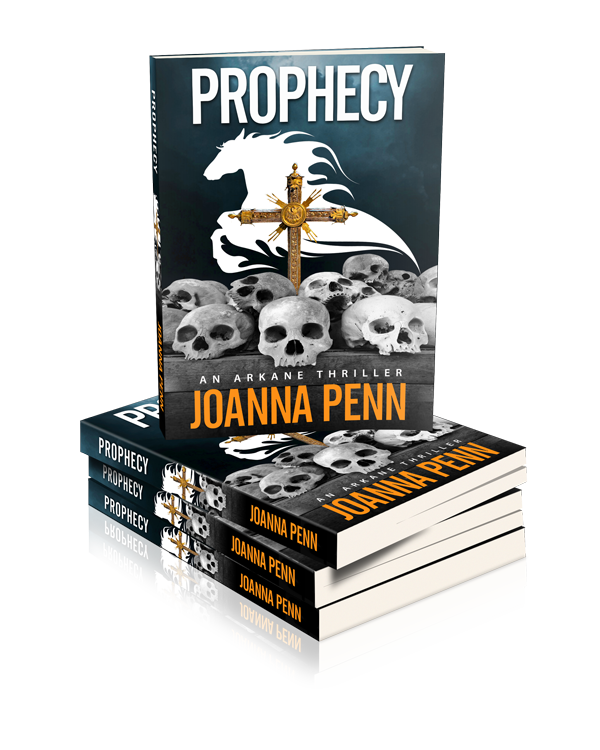
But my early reviews proved a couple of things.
Readers enjoyed the books — they have always had good reviews. But the branding and book titles looked like Christian Fiction, and although the stories are rooted in ecclesiastical history, biblical locations and myth, I am not a Christian.
The ARKANE thrillers are more like Dan Brown’s The Da Vinci Code in that they skirt the edge of religious myth and history, but are essentially global action-adventure thrillers.
So I needed to figure out how to re-position them.
Most authors struggle with this question of genre and market fit, and I struggled just as much as anyone else.
I also had a few reviews that mentioned my gender, for example, “I can’t believe a woman wrote this.” I’m not going to get into gender politics, but I don’t want my writing to be judged by my name or gender.
So I switched my fiction to J.F. Penn (full story here in A Tale of Two Author Brands) and I started a new website and a new email list.

I have never regretted that decision. I love having two author names as it helps me separate aspects of myself as well as my audience. Yes, it’s more work to manage two names, but it helps me switch mindset, and I have almost completely different business plans for the brands.
During those early years, I met with a few agents who were interested in working together, one in the USA, one in the UK. They didn’t work out ultimately, but they helped me with some repositioning and we parted on good terms. (It is not uncommon for authors and agents to part ways. It’s a business relationship and it has to serve both parties).
In 2015, I rebranded the first three books as Stone of Fire, Crypt of Bone, and Ark of Blood. I had new covers designed and also did a light edit of Stone of Fire to add more emotional beats than the original.
As I write this in late February 2022, there are now 12 ARKANE thrillers. They can be read as a series or as standalone stories, which is usually true of the kind of thrillers I read, as well as how I write.
Stone of Fire is out in its new re-edited form, but the other two books are still underway. You can get it as a free ebook on the usual stores, or download from my website if you’ve previously downloaded an older version. Check the copyright page says 2022 if you’re unsure which version it is.
Some authors worry about new editions and whether readers will be annoyed. Most readers don’t realize anyway, and the rest rarely care! I’ve never had an issue with re-writing and re-issuing books, whether fiction or non-fiction.
My re-writing process
I’ve updated the back matter and typos since 2015 and also reformatted the ebook file with Vellum. Here are my technical steps for re-writing.
Exported .RTF file from Vellum and saved as MS Word .docx
Imported .docx into Scrivener. This became my new master Scrivener file.
Opened ProWritingAid on my desktop and then opened Scrivener within ProWritingAid.
I edited each chapter within ProWritingAid, fixing issues that it flagged, many of which detailed in the craft section below. ProWritingAid has various suggestions for improvement and then an overall score. For most chapters, I was able to take the score from 60% to 90%, an invaluable first step.
Every day I worked on the manuscript, I exported the whole file from Scrivener as an MS Word docx, emailed it to myself and saved on Dropbox.
Once all the chapters were completed, I exported from Scrivener back to MS Word and printed out the full draft.
I edited the manuscript by hand. There was a lot of scribbling and deleting and removing of extraneous info, as detailed in the craft section below.
I updated the master Scrivener file with the hand edits.
I printed it again and edited the manuscript once more, but there were only minor issues this time through.
I ran it through ProWritingAid one more time and then exported to MS Word.
I sent the manuscript to my new editor, Kristen Tate at The Blue Garret. My previous editor/s have moved on over the years and it’s a natural thing to find a new editor over time. Kristen did a great edit with Track Changes on the MS Word with comments, line edits, and she created a new Style Guide which we’ll use going forward.
I went through the MS Word edits and Accepted or Rejected and changed things, then Kristen checked one more time.
I imported the final MS Word .docx into Vellum, formatted and published the ebook, and sent the files to my designer for print formatting. Here’s my tutorial on how to format with Vellum (Mac only), and there are other formatting options here.
Practicalities of publishing a new edition
I have never used an ebook ISBN for Stone of Fire, so I just uploaded the new edition with updated copyright info on the ebook stores.
I use a date in my file name so I always know when I updated the file last. I’ve updated this file multiple times over the last decade with minor edits and changes to the title, cover, back matter, etc. Updating files is a normal part of the indie author business and including dates in your files can help keep track of when you upload new versions.
I used new ISBNs for the print editions: 978-1-913321-96-3 (paperback); 978-1-913321-97-0 (large print); 978-1-913321-98-7 (hardback).
I unlinked the editions and unpublished them at KDP Print and Ingram Spark, then published new editions and linked them to my author name through author.amazon.com.
Remember, you can never get rid of old print editions completely, as there is a secondhand market. So un-publish the old editions, but be aware that they may still ‘win the buy button’ on Amazon, which is a pain! Check the publication date if you want the new version.
The copyright page has all the years that changes were made (more than just a typo), and also Previously Published as Pentecost.
The audiobooks are now out of date, so I have unpublished the first three books and the first boxset, and will consider getting new editions produced later.


Craft notes on rewriting
There is an anecdotal saying amongst writers that after a million words published, you know what you’re doing. Or at least, you have a better idea what to improve next!
I recommend Stages of a Fiction Writer: Know Where You Stand on the Path to Writing by Dean Wesley Smith if you want to assess where you are.
I’ve published several million words now, most of those since I wrote Stone of Fire, plus I’ve spent a lot of time improving my craft since then. These are some of the things I fixed in the rewrite.
Increased depth of character, emotion, and character Point Of View (POV)
Depth of character is all about point of view. Although I understood that each chapter needed a POV, it was clear in my writing that I had not sunk deep enough into each person.
For example, “Morgan saw that the door was open,” can become “The door was open.” Because I am in Morgan’s POV, I can write from her frame of reference.
“Morgan thought that perhaps Jake might need help” becomes “Jake needed help.”
The use of ‘[character name] thought’ or including thoughts in italics isn’t usually necessary because the chapter should be in the POV of the characters.
I also increased depth and emotion by including more detail about the character response to a situation and internal reactions, rather than just their actions. We read in order to get an insight into someone else’s life, to experience something vicariously, and understanding their point of view is part of the joy of reading.
In early drafts, Morgan would react with action and movement, but the reader didn’t know why. You might hear this described as ‘stimulus-response’ in some craft books, but it’s just a case of ‘something happens-characters responds physically but also internally.’
I think I was able to write more emotionally because after 12 ARKANE books, I know my characters so much better. My series characters, Morgan, Jake, and others like Father Ben, Martin (like Q in Bond), and others are more real to me. I found myself saying ‘Morgan wouldn’t do that,’ or ‘Jake wouldn’t say that.’ I couldn’t have known those things a decade ago.
If you want to develop this area, I recommend the Depth in Writing and Advanced Depth courses by Dean Wesley Smith at WMG Publishing on this topic.
In terms of books, check out Writing Unforgettable Characters: How to Create Story People Who Jump Off the Page by James Scott Bell, and Nail Your Novel: Bring Characters to Life by Roz Morris.
Leaned into my author voice
It’s annoying in the early years as craft workshops and books talk about ‘finding your voice,’ but the reality is that it’s more likely you will uncover it slowly.
When I started writing, I was afraid to let people see what was inside my mind. I have always struggled with fear of judgment and I’m a people-pleaser a lot of the time. I want people to like me, to think I am useful and a ‘good girl’ and an excellent member of society.
[More on this in The Successful Author Mindset.]
But J.F. Penn is not like that, and I needed time to discover that darker side of me. I needed time to stop self-censoring. J.F. Penn is my rebellious side, my inner Goth, the taphophile who loves visiting crypts and ossuaries, as well as cathedrals and galleries.
J.F. Penn writes about good and evil, right and wrong, angels and demons — and she loves a fast-paced, explosion book (or movie!) with a high body count!
At points in Stone of Fire, I could see glimpses of my future author voice, but I needed to lean into it further. I could sense my early writer self backing away from what I really wanted to say for fear of being judged as weird or too dark or too imaginative. But now I embrace my weird. I embrace my voice.
Improved pacing
The first edition of Pentecost was written more like a literary novel with long, complicated sentences, long paragraphs, and a lack of thriller pacing. After reading many thousands of thrillers in the last decade, and studying pace in particular, I made a few specific changes.
I used more line breaks, more paragraph breaks, shorter sentences in parts, sentence fragments, and faster dialogue. This increases ‘white space’ on a page, which means it’s faster for the reader’s eye to cross the space, and they have to turn the page to get the rest of the story.
James Patterson talks about this in his excellent Masterclass and I also recommend Dean Wesley Smith’s Pacing workshop.
I also broke scenes across the end of chapters so the reader would have to start a new chapter to find out more. This is more easily done when you’ve finished the whole book since most of us write in scenes, rather than chapters. I learned this from Story Engineering: Mastering the 6 Core Competencies of Successful Writing by Larry Brooks.
I also changed the order of some scenes to vary pacing, so there were some slower-paced chapters in between scenes of action to give the reader a respite. However, Stone of Fire is an action-adventure thriller, so needs to move at a decent clip!
I also used dates and timestamps in early editions, as well as other timeline details. This is because I’m a discovery writer, and in fact, I could remove those timeline aspects without impacting the story.
They were important in the story structure to make sure everyone was where they needed to be at the right time etc, but they didn’t need to be so obvious in the final text. I could indicate morning by the early sunlight or the passing of time with a mention of ‘next day,’ or other phrases.
Reduced research info-dumps
I love love love my research! One of the main reasons I write fiction is so I can go deep into research and spin-off real-world events, places, artifacts, and people, into story.
Too much research in the text can slow the pacing and may cause the reader to skip parts of the story. But equally, one of my hallmarks as J.F. Penn is sparking curiosity in the reader. Many of my fans email to say they google things to find out what’s true and they love my Author’s Note at the back of the books with my inspiration. So it’s a fine line in terms of what to leave and what to edit and what to remove completely.

I discovered I had repeated the same information within the book. I kept telling different characters the same thing, but not every character needed to know all that information, and it was the reader I needed to ensure had all the information at the right time.
I also wanted to open questions in the reader’s mind and hold information back so they didn’t know everything too early. They needed to read on to solve those open questions and keep turning those pages.
Changed passive voice to more active writing (where appropriate)
This is an extremely common issue with new writers, and especially those of us who have been in the world of legal or business writing, where hedging your bets rather than making strong statements is a good way to protect yourself.
For example, “The statue of St James was surrounded by pilgrims,” becomes “Pilgrims surrounded the statue of St. James.”
Of course, there are good reasons to use passive voice in some situations. As ever, it’s a fine line that you learn with experience and writing tools like ProWritingAid, which helped immensely. I wish I’d had it when I started out!
Resolved dialogue issues
Some craft books say that you should only ever use basic dialogue tags i.e. “Morgan said, Jake said.”
But that advice is dated in the world of increased audio consumption.
It is very obvious when a writer uses repetitive words in an audiobook. So, please, don’t repeat words like ‘said’ too much, but equally, you don’t have to replace them with ‘interjected,’ or ‘spat,’ or ‘whispered,’ although those can be good options if the story demands it.
The best thing to do is replace dialogue tags with character action.
Morgan walked over to the window and looked out at the sparkling blue waters. “The key is out there somewhere. We just have to find it.”
The Emotion Thesaurus: A Writer’s Guide to Character Expression is a good resource for matching character action with their emotions. For example, “Morgan was angry,” or “Morgan said angrily,” becomes “Morgan slammed the mug down on the table, her knuckles white with tension,” followed by dialogue.
Another new writer issue is using too many names in dialogue.
“How are you, Morgan?” said Jake.
“Thanks for asking, Jake. I’m fine,” Morgan answered.
Seriously, too many names! The main thing is to make it clear who is speaking.
Rephrased ‘started to’ and ‘began to’
I rephrased lots of ‘beginning to’ and ‘starting to’ phrases as well as other overly wordy phrasing. Sometimes that works fine, but I overused those phrases.
“He began to pray,” to “He prayed.”
“She started to walk,” to She walked.”
“She said with a whisper,” to “She whispered.”
I also checked every use of words like ‘actually, really, very, suddenly,’ and changed obvious clichés to something more original.
Edited for audio
I’ve learned a lot about writing for audio over the last decade and these days, I narrate my own short stories as well as non-fiction, so I’m far more sensitive to repetitive sounds, not just repetitive words. For example, the words you, blue, tattoo, and interview all start and end with different letters. They look different on the page, they have different meanings, but they strike the same note on the ear.
Repetition can work if you have a point to make, but sometimes it can jar the listener if you do it too much.
Repeated words are an issue and as writers, this often happens as the word is in our heads already, so we just re-use it without thinking. “For example, Mario led them around the side of the building and in through a side door.”
In many of these repeated word examples, I used thesaurus.com to find a better word.
There’s a chapter on this in Audio for Authors: Audiobooks, Podcasting, and Voice Technologies.
Rephrased disembodied body part action
This is a surprisingly common issue and once you’re aware of it, you will see it everywhere!
“Her hands held him down,” becomes “She held him down.”
“Morgan’s eyebrows raised in surprise,” becomes “Morgan raised an eyebrow.”
“Her mouth whispered a prayer,” becomes “She whispered a prayer.”
“His eyes were fixed on the screen,” becomes “He gazed at the screen.”
Rephrased for inclusivity and checked diversity
I’m British, so I have a keen sense of hierarchy. That is part of our national identity, and if you watch The Crown on Netflix, you’ll understand why!
When I wrote Stone of Fire, I still lived in a hierarchical office world and I found phrasing in this edit that I wouldn’t use now, and that has changed in the cultural shifts of the last decade. For example, I had one character addressing another as ‘Sir’ when they were not in the military.
I also had gendered language that I made gender-neutral. Mankind became humanity. Policeman became police officer. ProWritingAid has an inclusive language filter that helps identify phrasing that might need revisiting, although, of course, it is up to you as the writer to fix what you think is appropriate.
Edited to make the story more up to date in terms of technology
I wrote Stone of Fire in 2009-early 2011 and it included technology that has changed.
I changed ‘smart phone’ to phone; ‘mini-copter’ to ‘drone,’ and removed some dates which were in the future when I wrote the book, but are now meaningless.
I also wrote about a prototype virtual reality library for the ARKANE investigators to use in their research and rewrote that to make it more natural in a world where VR is becoming more common.
Reduced word count
These changes reduced the word count from around 72K to nearer 55K, which is the usual length for my ARKANE thrillers.
Originally, I was told that a book had to be over 70,000 words to be publishable, but that was back in the days when the digital revolution was in its early days. I definitely padded out with extra scenes that I removed in this edit.
Conclusion: Was it worth it?
This might seem like a lot, and it was about a month of working a few hours a day to re-edit and re-publish Stone of Fire, but it was worth the effort.
I am now re-editing Crypt of Bone and the issues are similar but it’s taking less time as I definitely improved between books 1 and 2. I intend to re-edit Ark of Blood, book 3, and that will be it for now. I can then re-release the boxset of the first 3 ebooks, and see what the effect of the changes have on my read-through to the rest in the series. I’ll report back on that in my 2022 year-end round-up.
Even if it doesn’t increase read-through, it has been well worth the effort to solidify my craft, provide new story ideas, as well as ideas for limited editions and NFTs, plus, more examples for How to Write a Novel, which I’ll be putting out this year in book form (fingers crossed!) I also feel much more confident in my fiction writing craft, and able to move forward into new stories.
Only you can decide whether such a rewrite is useful for your situation. It’s certainly not for everyone.
If you have any questions, or want to share your tips or rewriting experience, please leave a comment below.
Want to read Stone of Fire?
You can get the ebook for free on all the usual platforms. You can also download it for free on my Payhip store here, and have it sent to whatever digital device you like through Bookfunnel.
If you download a copy, check the copyright page says 2022 to make sure it’s the latest edition.
Print copies are available on Amazon here and filtering out through the other services over the next few weeks. You can search by the new ISBNs: 978-1-913321-96-3 (paperback); 978-1-913321-97-0 (large print); 978-1-913321-98-7 (hardback). I’m waiting to do the new audio editions.
The rewrites of Crypt of Bone and Ark of Blood should be completed by the end of April, and if you enjoy the books, there are 12 in the ARKANE series so far.
Want more tips on How to Write a Novel? Check out my course here.
The post Writing Tips: Lessons Learned From Rewriting My First Novel Over A Decade Later first appeared on The Creative Penn.
Go to Source
Author: Joanna Penn

